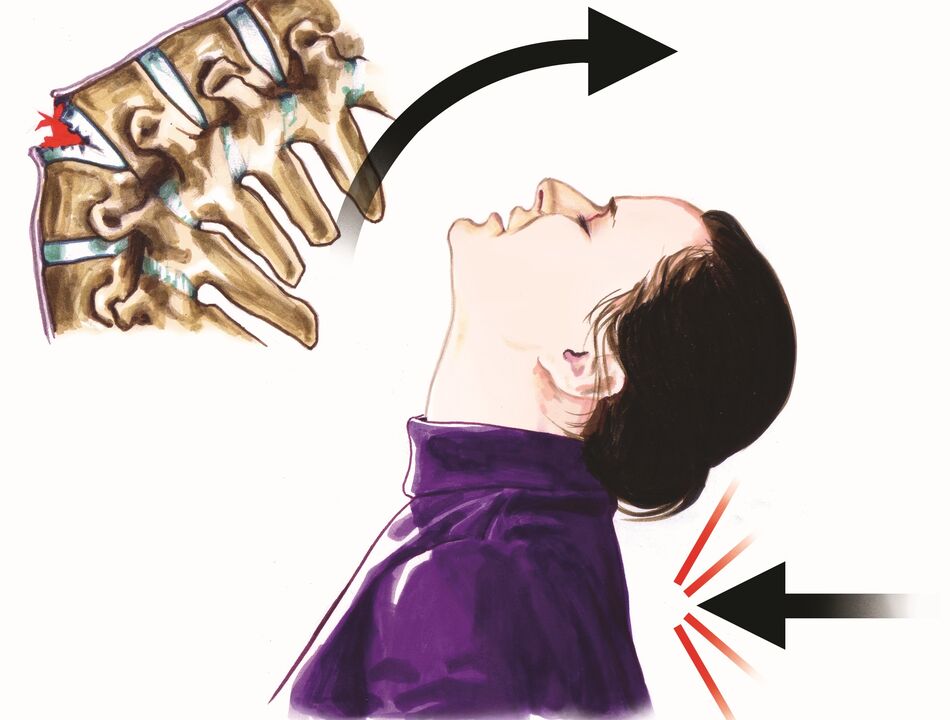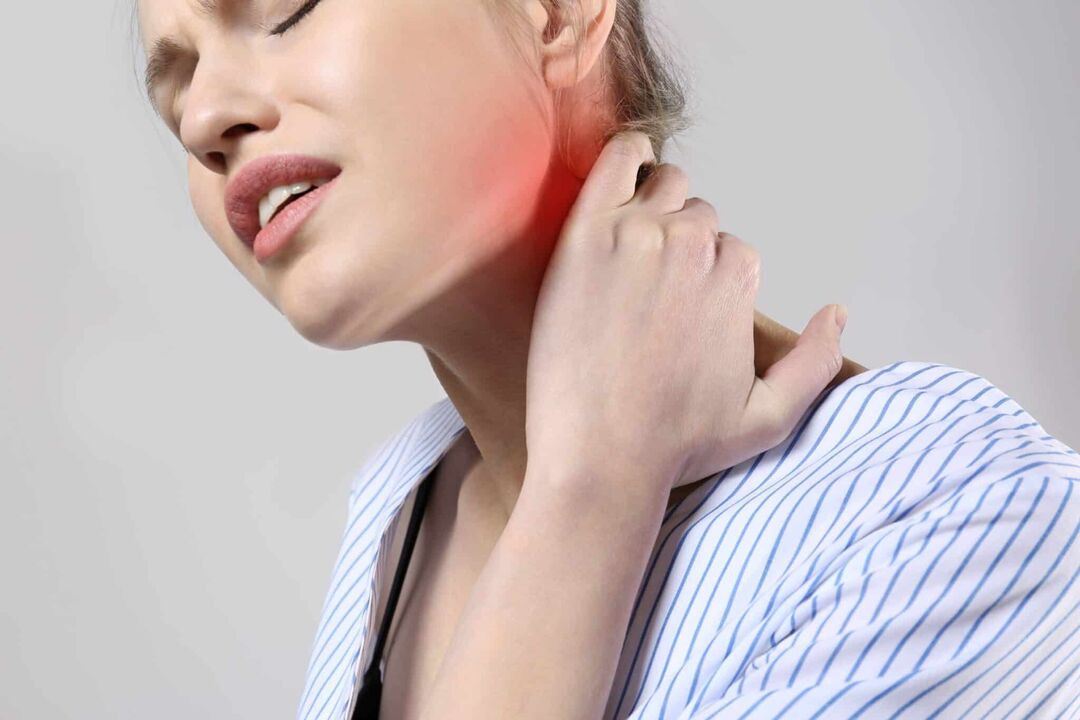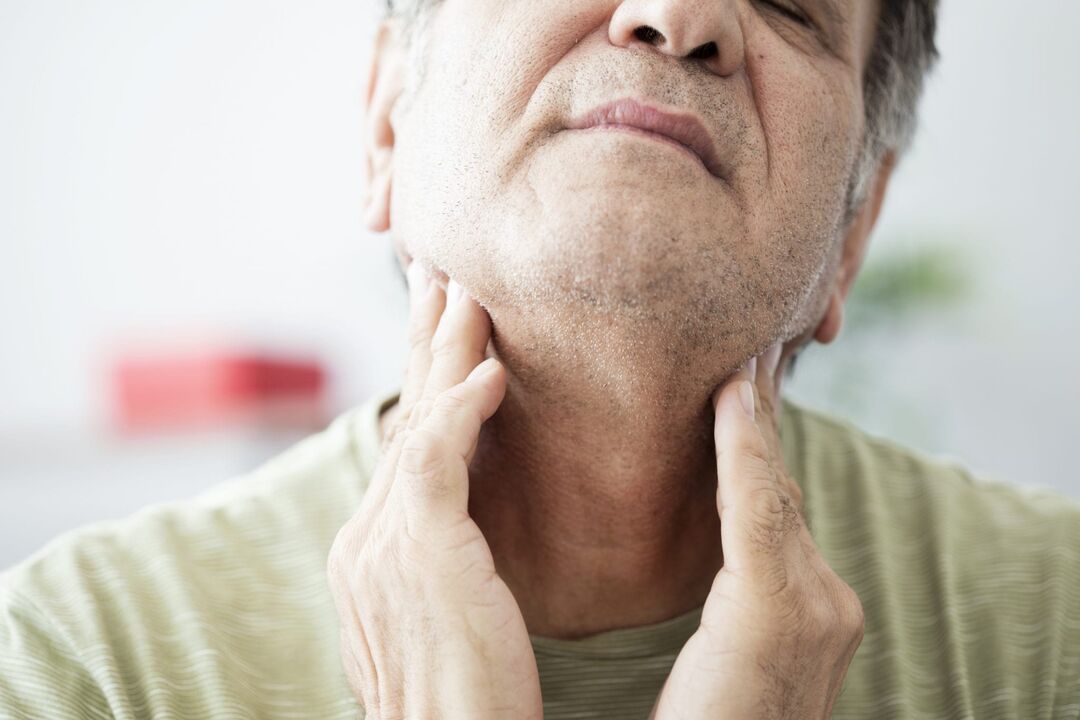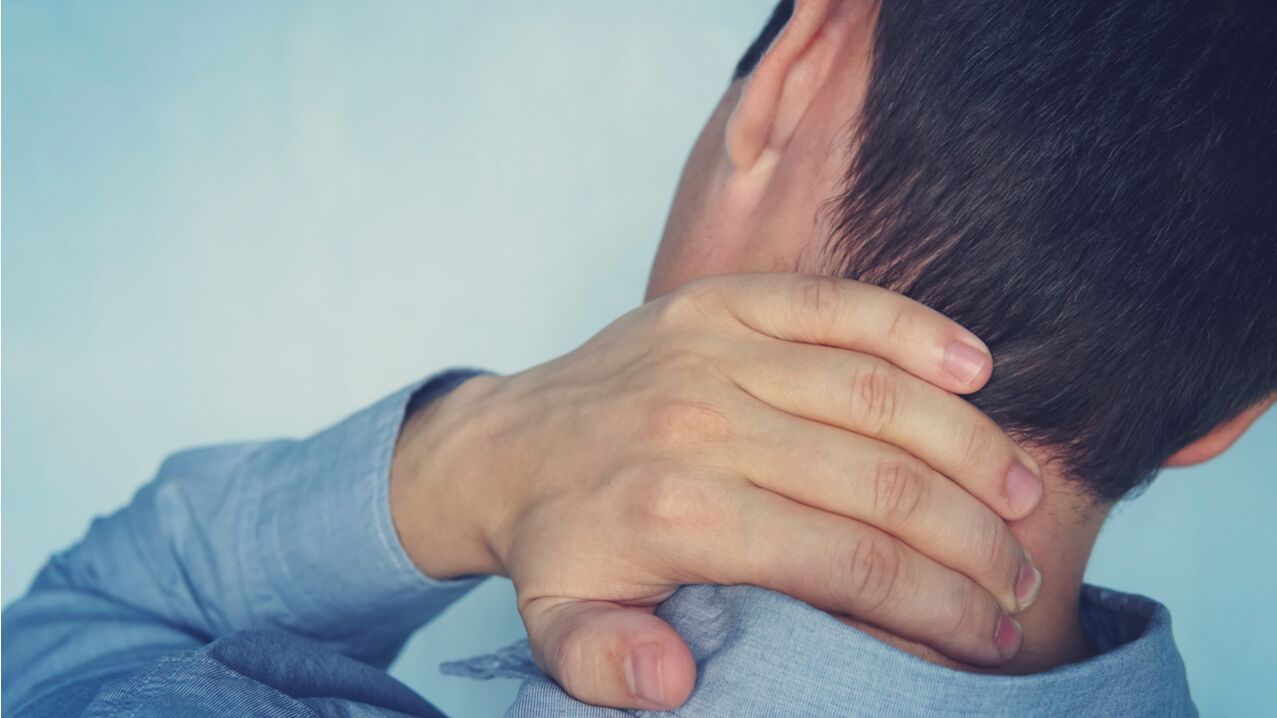
The neck consists of the spine that extends from the skull to the upper torso. The cervical discs absorb the impact between the bones. The bones, ligaments, and muscles support it and allow it to move. If there are any abnormalities, deviations, inflammation or trauma, this may cause pain or stiffness in the neck area. In such moments it is difficult to immediately determine what is hurting the neck and take any action.
Many people sometimes experience discomfort or stiffness in this side, most often due to poor posture or excessive exercise. In most cases, neck pain is not a serious condition and can be resolved in a few days. However, in some cases, such a symptom may indicate a serious illness and require consultation with a physician.
This article will help you understand why the neck hurts on the right side as well as in other places. It also provides a classification of pain types and its most common causes. Consider how you can get rid of discomfort in this part of the spine.

Types of pain in the cervix
To determine an effective treatment, a specialist must accurately determine the symptoms and causes of the pathology. Doctors classify neck pain as follows:
- Cervicago - Lumbago;
- Cervicalgia
The latter type includes pain arising from damage to the muscles of the spine or cervix. In turn, cervical pain can be divided into pains:
- Associated with skin lesions (superficial somatic);
- Associated with muscle or spinal cord injury (deep somatic);
- Associated with the detection of infection in the body or dysfunction of internal organs (visceral).
Cervicalgia, which affects the surrounding areas, is divided into:
- For cervicobrachialgia (pain going from the neck to the shoulders);
- To cervicocranialgia (pain going from the neck (back of the head) to the head).
Speaking of cervicago, it should be noted that this pain is always acute, it limits the mobility of the neck. It suddenly appears and tortures a person for some time so that it is impossible to think of anything else.
In order to determine why the neck hurts, it is very important for the doctor to determine its nature and description using the listed classification.

Common causes
According to medical statistics, most often people who seek medical help for neck pain are diagnosed with a number of the following diseases and conditions:
- Cervical osteochondrosis;
- Osteoporosis;
- Muscle spasm;
- Herniated disc;
- Inflammation of the lymph nodes;
- Systemic disorders in the body (infectious processes, tumors, problems with the immune system).
However, pain can be caused not only by the presence of a person’s disease. The appearance of discomfort can also be caused by muscle tension or tension (due to prolonged sitting at a computer, driving a car, lifting weights, uncomfortable posture during sleep or sports). In addition, discomfort may appear due to the fact that the person has a headache near the neck.
Why is this happening and what is the root cause? Only a specialist can answer this question. Sometimes people who try to get rid of discomfort take self-medication - massage, antibiotics, painkillers and other medications. However, the consequences of such actions may not be most favorable.
We need to understand what the diseases and conditions listed above are and how they can be dangerous and also why you cannot treat them.

Cervical osteochondrosis
The appearance of this pathology in humans is associated with anatomical specificity. The dimensions of the cervical spine are much smaller than the bony structures of other segments of the spine. The neck is constantly under stress and this is due to the fact that its main functions are to restrain itself and ensure its mobility. If a person asks why his neck hurts from the back, then he needs to be consulted whether he has osteochondrosis in this part of the spine.
Symptoms of this disease may be as follows:
- Pain from the neck to the shoulders that extends to the outer surface of the shoulder, forearm, and hands.
- Penetrating pain in the neck or neck area (especially aggravated in the morning, with head movements, coughing, etc. ).
- Headache (paroxysmal or persistent, dull, impulsive, aggravated by dizziness), dizziness, blurred vision, tinnitus.
- Pain in the chest muscle.
- Impaired blood flow to the cerebral arteries is noted, sometimes leading to temporary loss of consciousness. With deteriorating health, speech and motor functions may be impaired.
It is not worth treating this disease independently, as the results of such actions may not be joyful. Turn to professionals, people can be sure that the therapy will be of high quality and effective.
Typically, treatment for cervical osteochondrosis may include the use of various anti-inflammatory and analgesic agents, gels and restorative ointments, physiotherapy, and health exercises. Various healing varnishes can be used and so on.
Osteoporosis
It is a bone disease that occurs when bones lose density. As a result, they become weak and may collapse when dropped or with little impact. It is most common in women during menopause, but habits such as smoking, heavy drinking and poor diet and seductive behavior increase the risk of its occurrence.

For many people, formulating such a diagnosis may be the answer to the question of why the neck hurts from behind and at the same time gives it to the arms and shoulders.
Doctors distinguish three stages of this disease. The first stage suggests that a person begins to experience changes in the cervical spine such as decreased spinal density, mild cramps, weakness, and pain. In the second stage there is a constant headache, the pressure can drop sharply and increase to normal, numbness of the hands and general weakness appear. The third stage (the most difficult) suggests that a person experiences severe deformities in the spine, the hump may appear in the neck area, and head and neck pain becomes a constant accompaniment.
Treatment of osteoporosis aims to slow or prevent its development, maintain bone mineral density, and reduce pain. This is achieved through the use of supplements and medications, as well as light but constant loads (walking, sports), in favor of proper nutrition in terms of human lifestyle.
Joint spasm
Why does the neck hurt on the left side? The cause may be a spasm. This happens not only on the left, but can also affect the right and back of the neck. This is caused by involuntary contraction of the muscles as a result of intense exercise. The situation often causes severe pain that lasts from minutes to several days.
When asked why neck muscles ache, a person should think about how he sleeps, works, sits. Often, spasms occur due to a violation of the natural state of the body, weight transfer to the shoulders, including bags, slanted shoulders and other conditions (including serious diseases).
Painkillers can help relieve neck pain, relieve muscle tension, and reduce inflammation. However, they should be taken according to the attached instructions and with the knowledge of the doctor. If you are not sure that neck pain is caused by a spasm, you should not take any medication before consulting a specialist. In this case, you can apply an ice pack (wrapped in a towel) to the neck to temporarily relieve the pain.
We must always remember that it is very difficult to independently determine what hurts the neck. If the discomfort persists or intensifies, then this could be a very serious reason to go to the doctor.
Herniated disc
This element is a strong lignate that connects one spine bone to another. The discs are pads between each spine of the column. A cervical spine hernia can occur when excessive pressure is applied even to a healthy disc (moving a heavy load, falling from a height).
Symptoms of this condition usually include severe pain that may spread to one or both hands or feet, as well as numbness or tingling in the limbs, muscle weakness, and loss of sensation. At first, a person may not understand why the neck hurts during rotation, bending, or other normal movements. However, over time the discomfort becomes unbearable. Some people may not have neck or back pain with a disc herniation. Where the symptoms appear depends on where the pathology is located.
Treatment of a disc herniation depends on the severity of the disease and the visible damage. Most often, people’s condition improves within six weeks of their first visit to the doctor. In many cases medication and quality physiotherapy are sufficient. In therapy medications can be used to control pain, to reduce muscle spasm.
Inflammation of the lymph nodes
Typically, such pathologies are the result of exposure to bacteria or viruses. When these changes occur in the body, it is not difficult to understand why the neck hurts left or right, because it is in these areas that the lymph nodes are located. They can swell in response to an upper respiratory tract infection, such as a cold. Accompanying symptoms that may be accompanied by edema are cough, fatigue, chills, runny nose, profuse sweating.

What hurts the neck with inflammation of the lymph nodes? The answer is simple: the pathological process affects the nerve endings that send pain signals.
Treatment for such a condition usually involves identifying its nature (virus, infection, bacteria, tumor). The doctor then prescribes medication to treat the root cause, which has a positive effect on the removal of the inflammatory process.
Various systemic disorders in the body
Sometimes people do not understand why the neck and head hurt, from where these sensations go to the back or arms. Often this condition can be caused by some systemic disorder in the body. These include various tumors, depression, arthritis, infectious processes, meningitis, internal bruising and other serious pathologies.
Pain in the cervix can also occur when the body does not receive the required amount of nutrients (vitamins, micro and macronutrients).
Why your neck hurts in the front, back, or you feel muscle discomfort and headaches, only a doctor can answer based on the results of tests and additional studies. The root cause may be the poor condition of other organs and not just the collar area.

Diagnosis
The first thing that needs to be done to determine the cause of the neck pain is to visit a therapist. It will schedule the necessary consultation with other specialists and determine the need for technological diagnostic methods.
The specialist explains why the neck hurts on the right side, on the left or in another part of it. It will collect a complete history and determine what disorders are occurring in the body currently.
During the examination, the person may be given the following diagnostic methods:
- MRI;
- CT;
- ECG;
- Ultrasound.
Magnetic resonance imaging can help determine the condition of the tissues, computed tomography - to identify pathologies of the cervical spine, ultrasound examination is necessary to examine the arteries, vessels and surrounding tissues, and ECG so that the doctor can rule out various pathologies of the heart.
In addition, one of the mandatory tests is a study of the patient's blood, which will help to identify inflammatory or infectious processes in the body.
What should I do?
Every person on painkillers wants to get rid of it as soon as possible. For neck discomfort, the following will help you:
- Apply ice to the sore spot (first cover with a towel).
- If mild pain is caused by excessive exercise, you should temporarily stop strenuous physical exercise and give the neck muscles time to relax.
- It is essential to do light neck exercises (slow bending and turning) throughout the day.
- You need to control your posture so as not to aggravate the situation by putting extra strain on your muscles and spine.

If the pain persists for one to two days, you should consult a doctor who will determine why your neck hurts. If this is accompanied by symptoms such as swollen lymph nodes, fever, numbness or tingling, swelling, nausea, and inability to move the head or limbs, then you should immediately call an ambulance or see a specialist yourself.
Prevention
In order not to be surprised why your neck hurts closer to your head, in other places or muscle spasms occur, it is important to monitor your health and follow a number of recommendations:
- You should sleep only on comfortable pillows that will allow the cervical spine to relax. To avoid neck and spine problems, it is best to buy an orthopedic pillow.
- The best position for comfortable relaxation of the whole spine is lying on your back. You need to train to sleep in this position.
- You need to select the correct chair height and monitor position when working with the computer.
- It is not worth sending text messages, playing games or reading on mobile devices for a long time. This creates an excessive load on the neck (most often, during this activity, the head is lowered, causing disturbances in the work of this part of the spine).
- It is important to pay attention and find time for exercise, fresh air walks and sports.
- You need to change your diet and diet. It is very important for the body to get the required amount of nutrients throughout the day.
- It is better to give up bad habits (overeating, smoking, drinking alcohol and drugs).
Conclusion
Considering the main causes of neck pain, we can conclude that it is unlikely that it will be possible to diagnose and correct the problem independently. Therefore, it is important not to delay. You should see a specialist immediately, even if neck pain can be tolerated. We must remember that even minor discomfort can indicate a malfunction of the body.














































